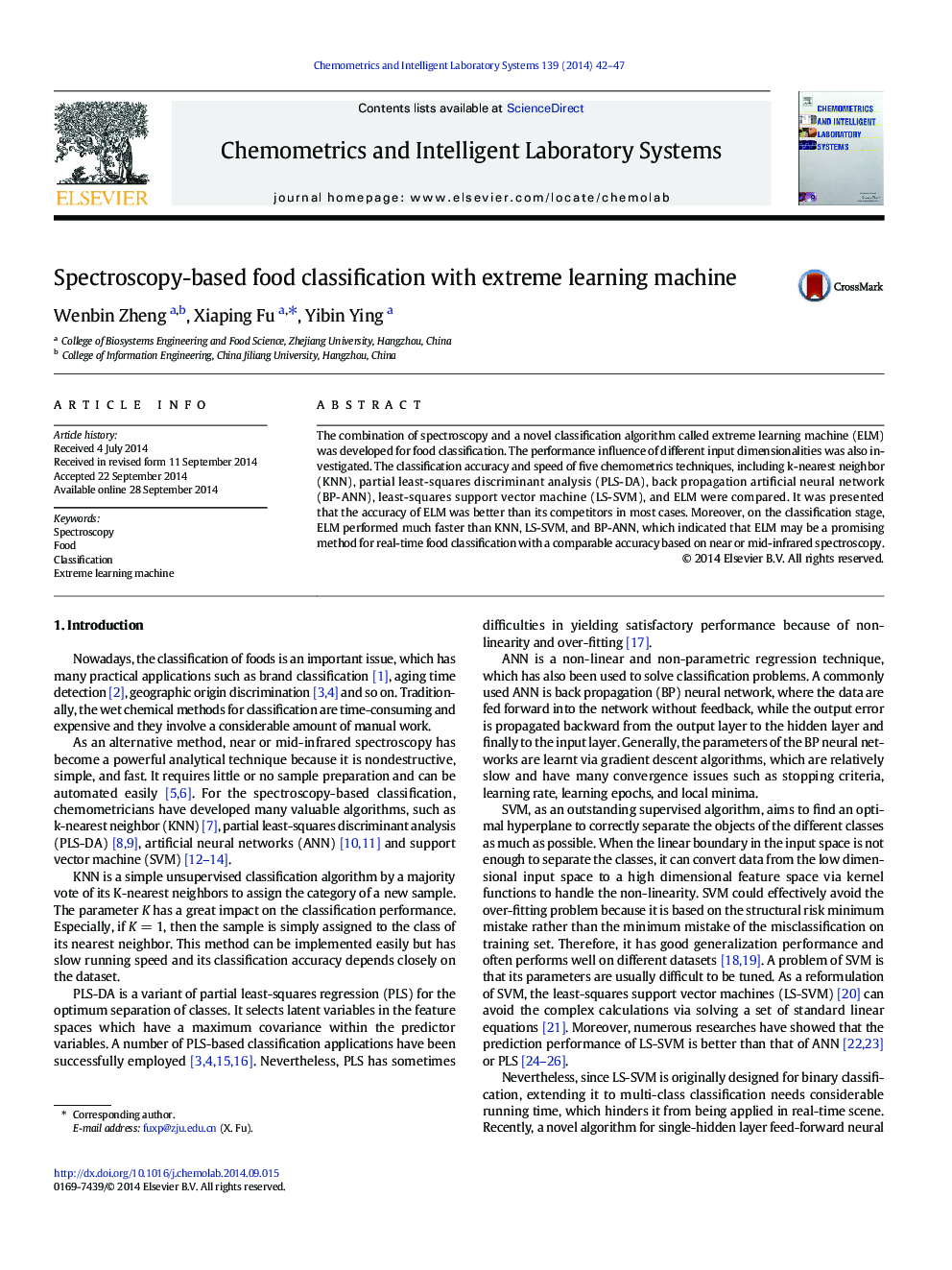| Article ID | Journal | Published Year | Pages | File Type |
|---|---|---|---|---|
| 1180641 | Chemometrics and Intelligent Laboratory Systems | 2014 | 6 Pages |
•A technique combining with the spectroscopy and extreme learning machine (ELM) for food classification was developed.•The performance influence of different input dimensionalities was investigated.•ELM is more robust and precise than its competitors in most cases.•ELM achieves a good trade-off between accuracy and speed.
The combination of spectroscopy and a novel classification algorithm called extreme learning machine (ELM) was developed for food classification. The performance influence of different input dimensionalities was also investigated. The classification accuracy and speed of five chemometrics techniques, including k-nearest neighbor (KNN), partial least-squares discriminant analysis (PLS-DA), back propagation artificial neural network (BP-ANN), least-squares support vector machine (LS-SVM), and ELM were compared. It was presented that the accuracy of ELM was better than its competitors in most cases. Moreover, on the classification stage, ELM performed much faster than KNN, LS-SVM, and BP-ANN, which indicated that ELM may be a promising method for real-time food classification with a comparable accuracy based on near or mid-infrared spectroscopy.
